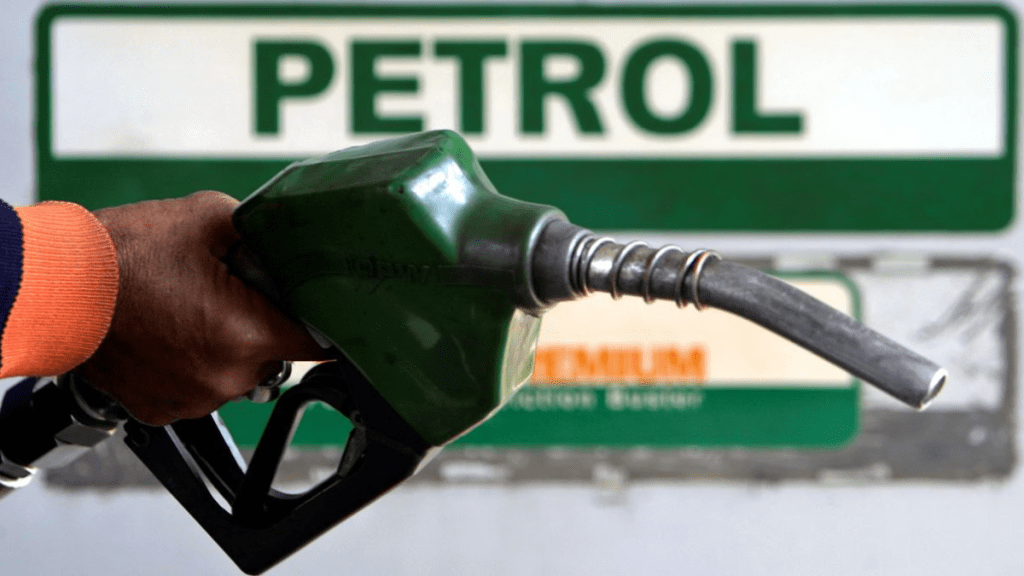The government on Monday hiked the excise duties on petrol and diesel by Rs 2 each, seeking to use the window provided by subdued crude prices to mobilise additional revenues from the auto fuels. The extra receipts from the increase in the specific duties would be used to offset the under-recoveries incurred by the oil marketing companies. The losses occurred as the OMCs kept retail prices of fuels changed over several months when global oil prices firmed up.
Concurrently, the OMCs raised the retail prices of LPG by Rs 50/cylinder on Monday, for both Ujjwala (subsidsied) and the non-Ujjwala consumers, a move that will help them cut under-recoveries on the sale of the cooking fuel.
Oil minister Hardeep Singh Puri said that the excise hike will not be passed on to the consumers, and the proceeds would help offset Rs 43,000 crore losses incurred by OMCs. “PSU oil marketing companies have informed that there will be no increase in retail prices of #Petrol and #Diesel, subsequent to the increase effected in Excise Duty Rates today,” the oil ministry said in a post on X.
For the record, the petrol and diesel prices are deregulated.
Assuming volume growth 2% for diesel, and 6% for petrol, the annual revenue mop-up from the excise hike would be about Rs 35,000 crore, Prashant Vashisht, Senior Vice President & Co-Group Head, ICRA, said.
“Since LPG prices have also been increased and crude prices have come down substantially, the OMC losses might be compensated,” he added.
The excise duty on petrol is Rs 19.9 as on April 1, 2025 which after the hike will become Rs 21.9 and for diesel the duty will rise to Rs 17.8 from Rs 15.8.
During the Covid period, the Centre had steeply hiked the assorted levies – excise which is shareable with the states and various cess that are not – on the two auto fuels. The taxes on auto reached peak levels of Rs 32.98/litre for petrol and Rs 31.83/litre for diesel in May 2020. Thereafter the duties have been reduced multiple times, but still are much above the pre-Covid levels.
Immediately before the general elections in 2024, the government had reduced petrol and diesel prices by Rs 2 a litre each. Petrol currently costs Rs 94.77/lire in Delhi while diesel costs Rs 87.67/litre to the retail consumers.
The price of a 14.2 kg LPG cylinder will increase to Rs 853 from Rs 803 earlier for general users with the latest decision. The new cylinder price for Ujjwala beneficiaries now stands at Rs 553 from earlier Rs 503.
India imports more than 60% of its domestic LPG consumption. Prices of LPG in the country are linked to its price in the international market. The government continues to modulate the effective price to consumers for domestic LPG.
During the period 2020-21 to 2022-23, the average Saudi CP (international benchmark for LPG pricing) went up from $415 per MT to $712 per MT. However, the increase in the international prices was not fully passed on to the customers. This resulted in public sector OMCs incurring Rs 28,000 crore under-recoveries. However, the government approved a one-time compensation of Rs 22,000 crore for oil marketing companies to enable them to operate freely.
The combined losses of three state-run retailers – IOC, BPCL and HPCL for the first half of the last financial year – were Rs 21,201 crore due to petrol and diesel prices being frozen when global prices rose. To compensate them, the Centre provided an equivalent amount of budget support last year.
The minister also said that if global crude oil prices remain in the lower range, the OMCs may even reduce the petrol and diesel prices. “OMCs will have headroom for price revision not upwards but downwards if prices (of crude oil) remain lower,” Puri said.
Considering the current international benchmark of Saudi CP at higher levels, losses of over Rs 41,338 crore is expected to be incurred in LPG during FY25 by state-run OMCs, the government said, adding that as gas prices decline, the government will review the prices again and may bring it down.
“The increase in the price of LPG would provide support to the profitability of OMCs who were suffering massive under recoveries on the sale of domestic LPG,” said Vashisht. He also noted that due to the significant decline in crude oil prices recently, the marketing margins of oil marketing companies are expected to remain healthy despite the excise duty increase.
Global crude oil prices hovered around $63 per barrel on the back of weakening global demand and an increased output by the Organisation of Petroleum Exporting Countries announced recently.

